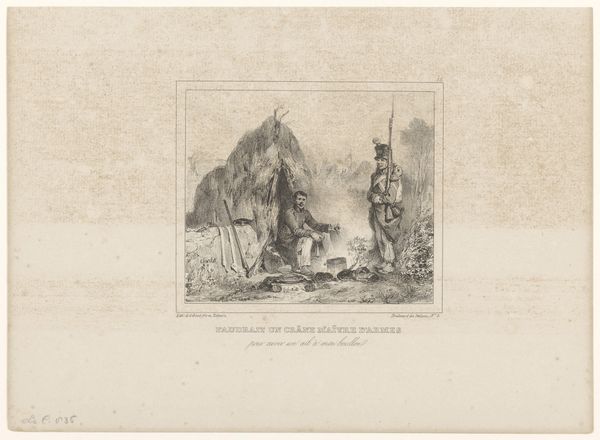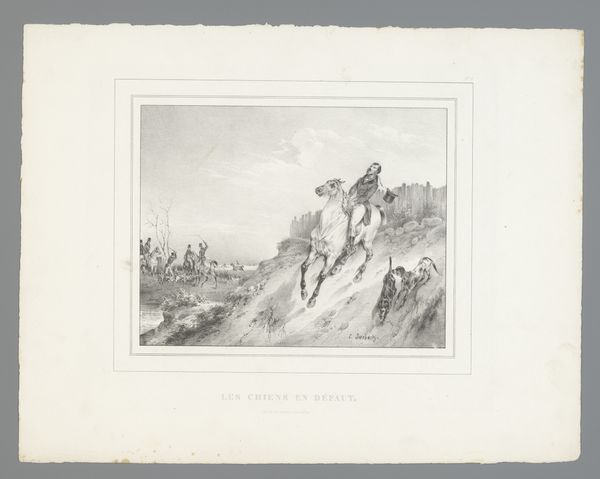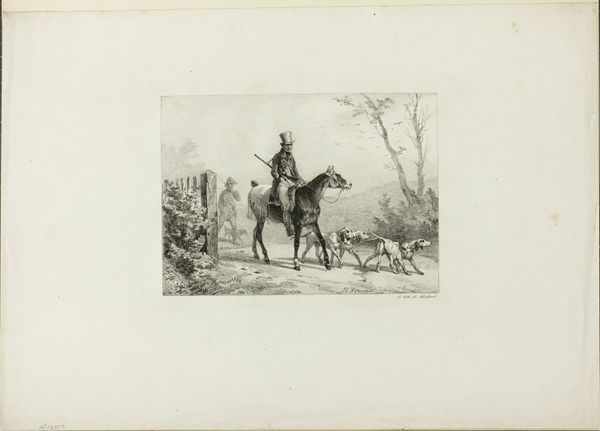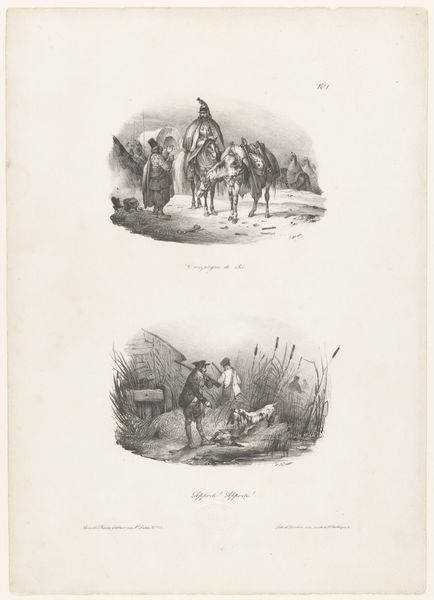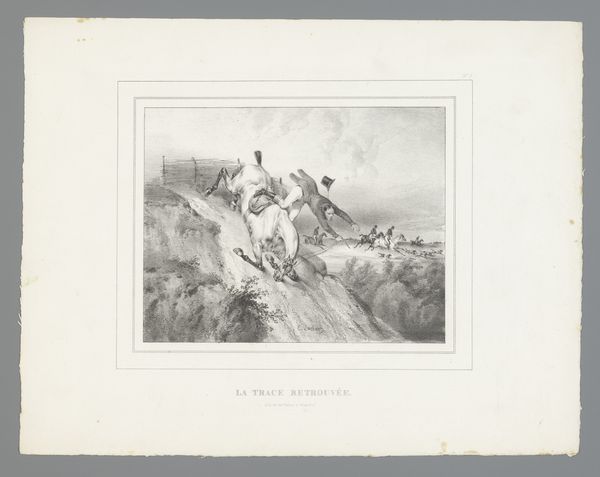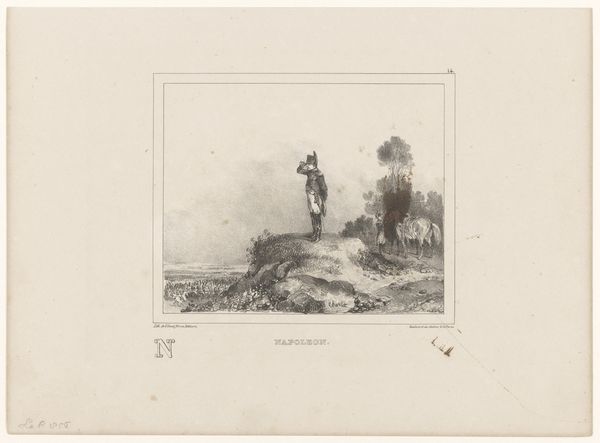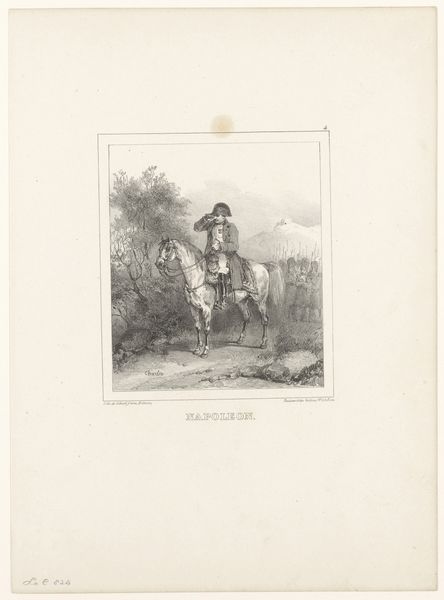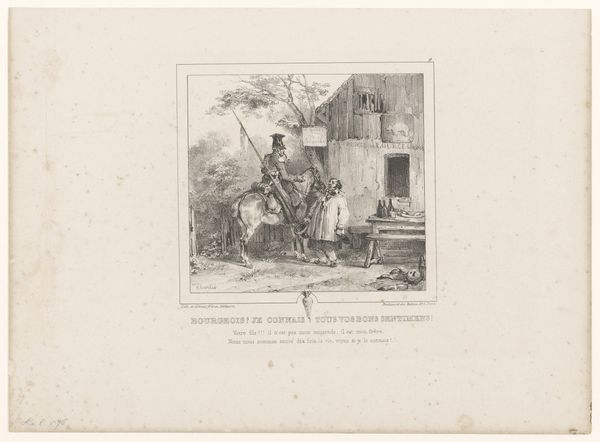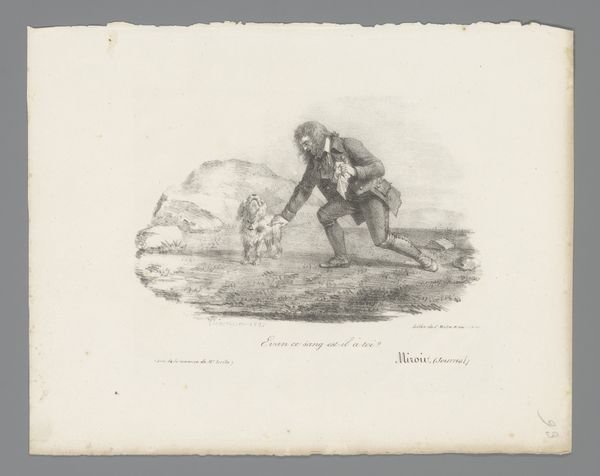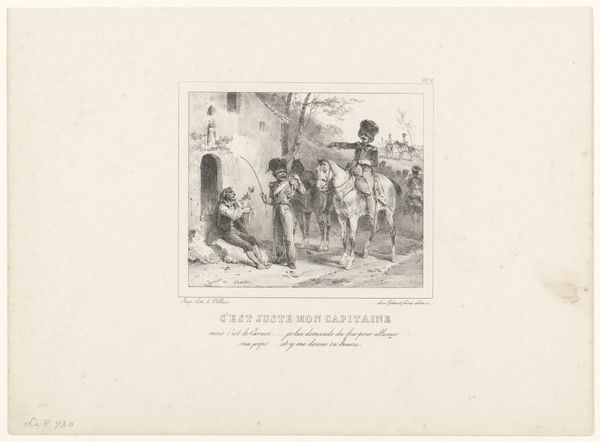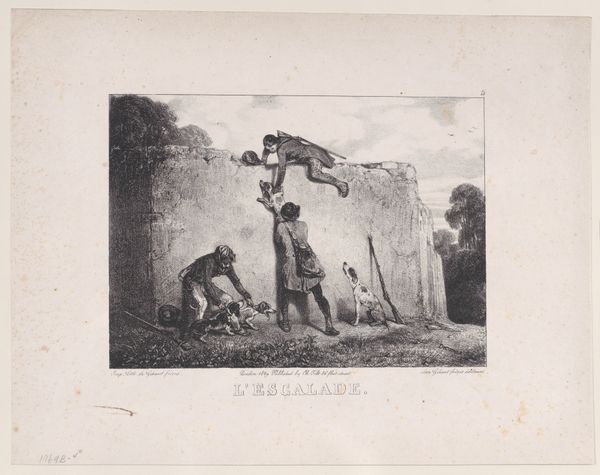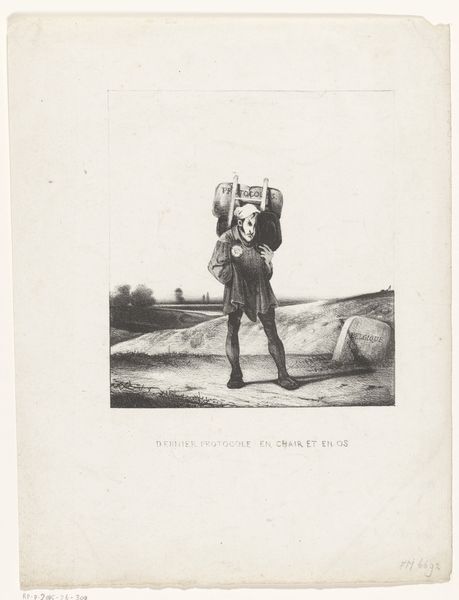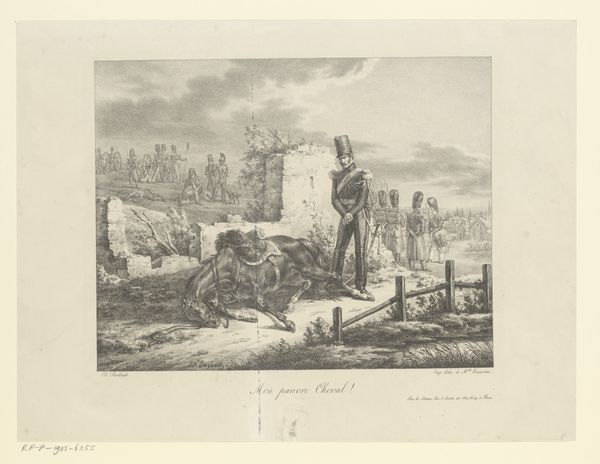
print, etching, engraving
#
narrative-art
# print
#
etching
#
figuration
#
romanticism
#
genre-painting
#
engraving
Dimensions: height 228 mm, width 276 mm
Copyright: Rijks Museum: Open Domain
Curator: Let's turn our attention to Nicolas Toussaint Charlet's etching from 1822, currently held at the Rijksmuseum, titled "Soldaat met baby op de rug en geweer in de hand" or "Soldier with baby on his back and rifle in hand". Editor: My immediate impression is one of precarious balance, both physically and emotionally. The contrast between the rough-looking soldier and the vulnerability of the child creates a striking tension. It’s as if tenderness and war are uncomfortably colliding. Curator: Indeed, Charlet's print is made using etching and engraving, techniques involving biting into metal plates with acid to create lines and textures. These processes were widely accessible, making printmaking a popular medium for disseminating imagery and social commentary to a broad audience. Notice how the lines almost look jagged, emphasizing a raw depiction of labor and military service, but perhaps fatherhood, too. Editor: And what resonates profoundly is how the imagery weaves together these archetypes of soldier and father. The rifle, symbol of authority and aggression, becomes secondary to the bundled-up baby strapped to his back. It almost reverses conventional expectations and suggests a protective vulnerability. Curator: Right, there is some commentary being offered. Considering the context, the post-Napoleonic era in France, where military service had deeply affected all social classes, Charlet's choice of etching and engraving—relatively democratic printmaking techniques—speaks to the accessibility of the image. It’s less a glorification of war and more a portrayal of its impact on everyday people, like this soldier. Editor: And beyond the immediate narrative, consider the enduring image of the caregiver amidst chaos. This engraving speaks to fundamental aspects of human experience - the universal vulnerability of childhood, perhaps. Curator: It makes one wonder about the economics and labor involved. Who else might have been involved in making, distributing, and consuming images like this? Were these images accessible to those portrayed within them? Editor: Charlet offers a tableau of human tenderness existing side-by-side with human conflict. I think this juxtaposition is both poignant and lasting. Curator: Agreed. Looking through the lens of production and consumption, we might reflect upon this print’s journey across time and consider the evolving understanding of both fatherhood and military service.
Comments
No comments
Be the first to comment and join the conversation on the ultimate creative platform.
